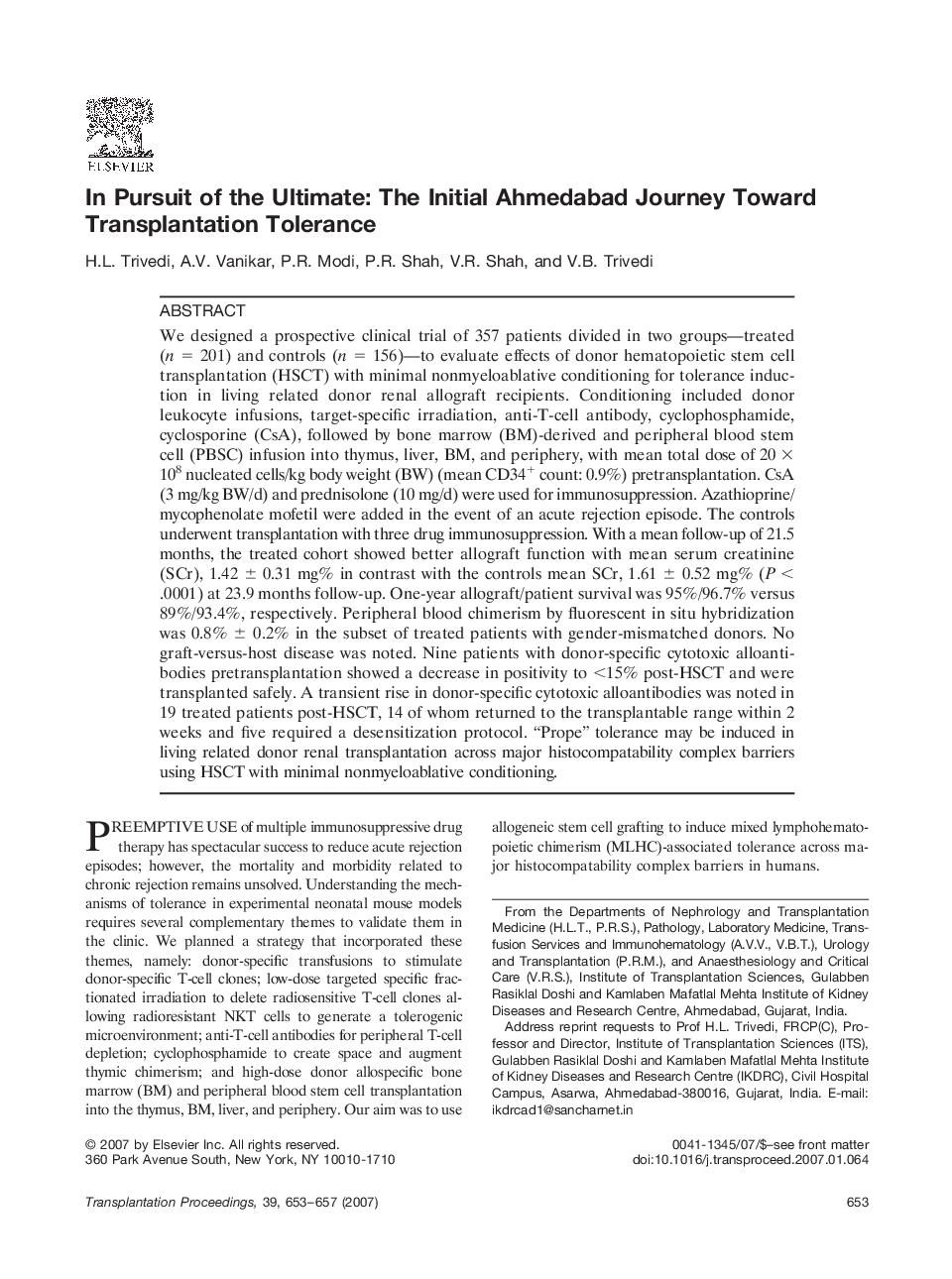| Article ID | Journal | Published Year | Pages | File Type |
|---|---|---|---|---|
| 4263182 | Transplantation Proceedings | 2007 | 5 Pages |
We designed a prospective clinical trial of 357 patients divided in two groups—treated (n = 201) and controls (n = 156)—to evaluate effects of donor hematopoietic stem cell transplantation (HSCT) with minimal nonmyeloablative conditioning for tolerance induction in living related donor renal allograft recipients. Conditioning included donor leukocyte infusions, target-specific irradiation, anti-T-cell antibody, cyclophosphamide, cyclosporine (CsA), followed by bone marrow (BM)-derived and peripheral blood stem cell (PBSC) infusion into thymus, liver, BM, and periphery, with mean total dose of 20 × 108 nucleated cells/kg body weight (BW) (mean CD34+ count: 0.9%) pretransplantation. CsA (3 mg/kg BW/d) and prednisolone (10 mg/d) were used for immunosuppression. Azathioprine/mycophenolate mofetil were added in the event of an acute rejection episode. The controls underwent transplantation with three drug immunosuppression. With a mean follow-up of 21.5 months, the treated cohort showed better allograft function with mean serum creatinine (SCr), 1.42 ± 0.31 mg% in contrast with the controls mean SCr, 1.61 ± 0.52 mg% (P < .0001) at 23.9 months follow-up. One-year allograft/patient survival was 95%/96.7% versus 89%/93.4%, respectively. Peripheral blood chimerism by fluorescent in situ hybridization was 0.8% ± 0.2% in the subset of treated patients with gender-mismatched donors. No graft-versus-host disease was noted. Nine patients with donor-specific cytotoxic alloantibodies pretransplantation showed a decrease in positivity to <15% post-HSCT and were transplanted safely. A transient rise in donor-specific cytotoxic alloantibodies was noted in 19 treated patients post-HSCT, 14 of whom returned to the transplantable range within 2 weeks and five required a desensitization protocol. “Prope” tolerance may be induced in living related donor renal transplantation across major histocompatability complex barriers using HSCT with minimal nonmyeloablative conditioning.
